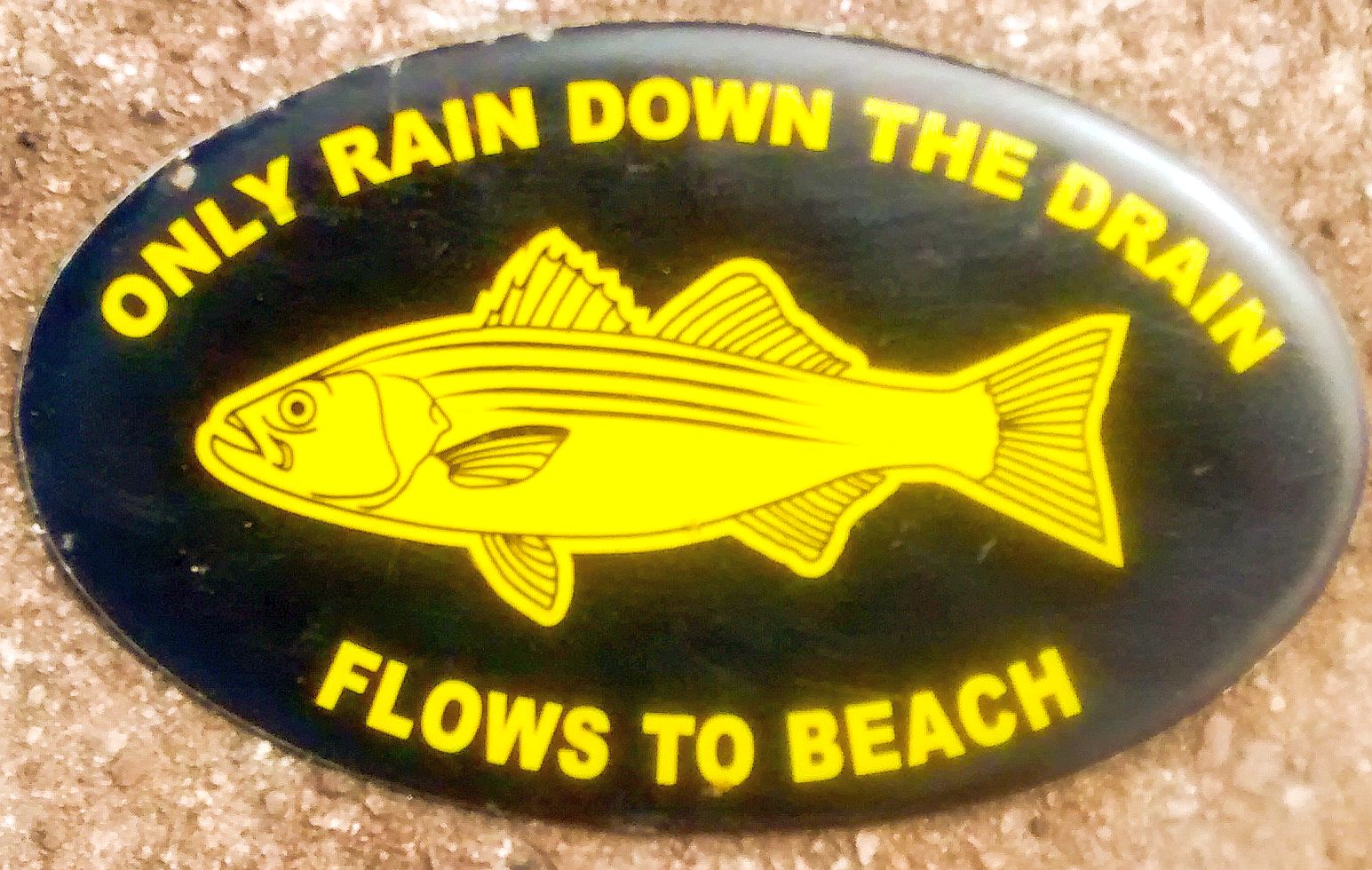When we were last in Auckland, 30 years ago, it was a sleepy place and we struggled to find a restaurant open on New Year’s Eve. Today Auckland is a bustling yachting and cruise boat harbour, with extensive marinas (all by Walcon, like Salcombe’s) full of yachts and super-yachts. Two things struck me: the first was that the very largest yachts, both sailing and White Rhinos, were all registered in tax havens. It’s a funny world when the rich need even their hobbies to be tax-free.
The second was at my feet – a shiny stainless fish on a road drain. That is an international sign which will soon be coming to Salcombe: but to explain why needs a little background.
When town sewer systems were first built, houses used very little water, not least because it often had to be drawn from wells. This meant that the flow through the sewers would not generally be enough to keep them moving. The clever Victorian solution was simple: use rainwater drains to keep the sewers flushed with water falling from the heavens.
Today life is rather different. With the introduction of mains supply, households use far more water so sewers can now be kept clear by the discharge from baths, showers, dishwashers, sinks and washing machines. Indeed, the higher water usage meant (particularly in some hilly places) that heavy rain could then overwhelm the system and, as in Salcombe, cause the sewers to overflow into the street or the harbour.
The solution is to disconnect the roadside drains from the sewer and let them instead discharge rainwater directly into the harbour without going through a treatment works. That is a major operation but it is currently underway in Salcombe. The aim is that heavy rain will neither blow the covers off the sewers in Fore Street, nor overwhelm Malborough water treatment works, forcing it to pump raw sewage into the stream which runs across South Sands.
 But it is important that nobody then pours pollutants down these road drains – no oil, paint, or detergent from car, window or carpet cleaning – nothing other than rainwater. And to show which drains run straight into the harbour, each will be marked by the international symbol of a fish – in Salcombe’s case, a sea bass. That little symbol will then be shared by Salcombe and Auckland.
But it is important that nobody then pours pollutants down these road drains – no oil, paint, or detergent from car, window or carpet cleaning – nothing other than rainwater. And to show which drains run straight into the harbour, each will be marked by the international symbol of a fish – in Salcombe’s case, a sea bass. That little symbol will then be shared by Salcombe and Auckland.
Comments are closed, but trackbacks and pingbacks are open.